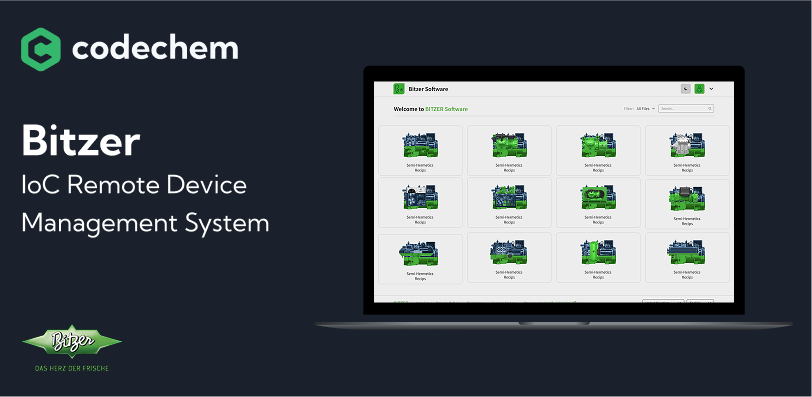Bitzer IoC Remote Device Management System

Client
Bitzer SE / Lodam Electronics
Industry
IoT
Description
Bitzer SE / Lodam Electronics is a global refrigeration and air conditioning technology leader. With a focus on innovation and sustainability, they needed a sophisticated solution to monitor and manage their connected devices remotely.
As Bitzer SE expanded its range of smart, connected devices, it faced growing remote monitoring and management complexity. Their initial system had several limitations:
Built on legacy technology that limited scalability and cross-platform deployment
Difficult to customize for different brands and client requirements
Inefficient infrastructure that increased operational costs
Complex deployment and configuration processes
Limited real-time monitoring capabilities
Challenges with consistent performance across multiple platforms
The company needed a modern, flexible solution to scale with its growing IoT ecosystem while providing real-time insights into device performance and status.
Our Collaboration
We partnered with Bitzer SE to transform their remote device management system into a cutting-edge IoT platform. The project began with a strategic migration from their initial version to a modern .NET stack, fully porting the system to Linux and Docker environments to improve scalability and reduce infrastructure costs.
The overhauled system became a multi-tenant, fully brandable platform, allowing complete customization of colors and configurations for different client needs. At its core, the solution provides real-time monitoring of connected devices through SignalR (websockets), giving users immediate visibility into sensor data and hardware status.
As the project evolved, our role expanded to team leadership, guiding the development of new features, customizations, and continuous improvements. We implemented a comprehensive monitoring stack with Grafana and Prometheus to provide deeper insights into system performance and device behavior.
A significant aspect of the project involved modernizing the frontend experience by migrating from legacy AngularJS to modern Angular, enhancing the user interface and experience while maintaining compatibility with the expanding IoT backend services.
Key Features
Real-time Device Monitoring: Live visualization of sensor data and device status through websocket connections
Multi-tenancy Architecture: Secure separation of data and customizable experiences for different clients
Containerized Deployment: Docker-based infrastructure for consistent deployment across environments
Comprehensive Monitoring: Integrated Grafana and Prometheus stack for system insights
Cross-platform Support: Hybrid applications supporting multiple platforms and form factors
MQTT Integration: Support for lightweight IoT communication protocols
Cloud-native Design: Optimized for AWS infrastructure with services like EC2 and DynamoDB
Technology Stack
The solution leverages modern technologies for optimal performance and scalability:
Backend: .NET 8, C#, SignalR, XML
Databases: MS SQL, PostgreSQL, Redis, AWS DynamoDB
IoT Communication: MQTT, SignalR
Frontend: Angular 15
Infrastructure: Linux, Docker, Kubernetes
Monitoring: Grafana, Prometheus
DevOps: Automated CI/CD pipelines, containerized testing environments
Impact
The modernized remote device management system has delivered significant benefits to Bitzer SE:
Enhanced Visibility: Real-time monitoring of thousands of connected devices worldwide
Reduced Costs: Optimized infrastructure and containerization significantly lowered operational expenses
Increased Flexibility: Multi-tenant architecture enables customized solutions for different market segments
Improved Reliability: Modern monitoring stack ensures issues are identified and addressed proactively
Faster Deployment: Streamlined DevOps processes reduced time-to-market for new features
Future-Proof Technology: Modern technology stack enables ongoing evolution of IoT capabilities
This successful collaboration demonstrates how strategic modernization of IoT platforms can transform business operations and create new value for manufacturers of connected devices.
Let's talk!
Tell us your app idea and what you want to achieve. We’ll get back to you in one business day.











